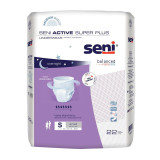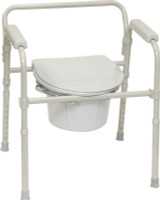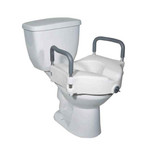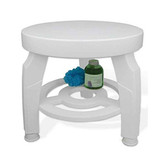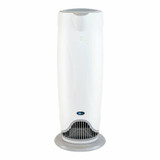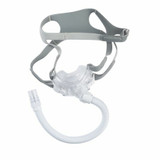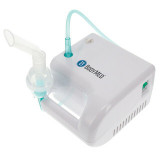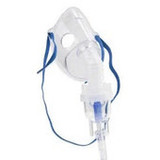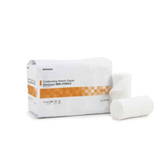
The Caregiver Guide - Understanding Arthritis
Arthritis is a chronic condition that, according to Centers for Disease Control and Prevention (CDC) statistics, affects an estimated 53.2 million people in the US. The Arthritis Foundation’s 2020 Arthritis by the Numbers report lists this, together with back pain, as by far the leading cause of disability in the US. It also puts the total medical costs and lost earnings at a staggering $304 billion in 2013. Imagine what that number would be ten years on.
There are more than 100 types of arthritis, but the common denominator is that they affect the joints, tissue around the joints, and other connective tissue. Symptoms vary but almost always include joint pain, stiffness, and inflammation, which can significantly impact daily life.
Whether you are personally dealing with the condition or caring for someone with it, this caregiver guide aims to provide information and insights to help you deal with the challenges it poses. We discuss its nature and its impact on daily life and how we can equip ourselves to manage the symptoms and improve overall quality of life.
Types of Arthritis
Arthritis is a catch-all term that refers to a multitude of different conditions affecting the joints. Understanding the different types helps in obtaining a proper diagnosis and treatment promptly. In this section, we will discuss the five most common types, which account for the vast majority of all cases.
Osteoarthritis (OA) is a degenerative joint disease caused by the breakdown of cartilage in the joints. It commonly occurs with age and often affects weight-bearing joints such as knees and hips.
Rheumatoid arthritis (RA) is an autoimmune disease that causes chronic inflammation in the joints. It typically affects multiple joints symmetrically and can lead to joint deformity if left untreated.
Psoriatic arthritis (PsA) is a form of inflammatory arthritis that occurs in individuals with psoriasis, a skin condition characterized by red patches covered with silvery scales. PsA can affect any joint and may cause swelling, stiffness, and pain.
Gout is caused by an accumulation of uric acid crystals in the joints. It typically affects one joint at a time, most commonly the big toe, but can also affect other joints like ankles or knees. Gout attacks are known for their sudden onset of severe pain and inflammation.
Juvenile arthritis refers to several types of chronic arthritis that occur in children under 16 years old. The most common type is juvenile idiopathic arthritis (JIA), which involves persistent joint inflammation lasting for at least six weeks.
Symptoms and Diagnosis
The most common symptoms are joint stiffness, swelling, and pain. People with arthritis may experience difficulty moving affected joints, especially after periods of rest or inactivity. Swelling may also occur around the joints, accompanied by warmth and redness.
To make a diagnosis, doctors will perform various tests that help determine the type and severity of arthritis. Common diagnostic tests include blood tests to detect specific markers associated with inflammation, X-rays or MRI scans to assess joint damage or abnormalities, and joint fluid analysis to check for signs of inflammation or infection.
If you experience persistent joint pain or swelling and suspect you may have arthritis, you should consult a doctor immediately. The earlier the disease is diagnosed and treatment commenced, the less damage it will have done. This significantly improves the patient’s prognosis.
Treatment Options and Management Strategies
This condition cannot be cured, but the progression can be slowed down with treatment, and the symptoms can be managed. As with any treatment regimen, start by looking at lifestyle changes and natural therapy such as exercise, assistive devices or pain management techniques. In severe cases, pharmacological solutions may be the only option, but this should always be a last resort.
Lifestyle changes include regular exercise, maintaining a healthy diet, managing stress levels, and getting enough rest. This may help to improve joint function and contribute to the overall pain management strategy. For an in-depth discussion on assistive devices, read this article or read this one for tips on preparing healthy and tasty food.
There are various medication choices available depending on the severity of symptoms and individual patient needs. Nonsteroidal anti-inflammatory drugs (NSAIDs) are commonly used to reduce pain and inflammation, while corticosteroids or disease-modifying antirheumatic drugs (DMARDs) may be prescribed in more severe cases. Medication choices must never be made without consulting a healthcare professional who can assess all the relevant facts and consider factors such as potential side effects or drug interactions.
Caring for Someone with Arthritis
Arthritis causes a lot of pain and can significantly hamper a patient’s ability to carry out activities of daily living. Caring for someone with arthritis, therefore, requires both practical assistance and emotional support. Understanding the challenges faced by patients helps you, as a caregiver, to provide appropriate support.
Assisting with daily activities may include helping with tasks such as dressing, grooming, meal preparation, and household chores. Be aware of the limitations and pain that your patient experiences and adapt your approach accordingly. Simple modifications like providing assistive devices or making changes to the home environment can make a big difference to their quality of life.
The chronic pain and discomfort can take a toll on your patient’s mental well-being. Try to be empathetic and understanding towards their emotions. Encourage open communication and listen actively to avoid misunderstandings. Offer encouragement and praise every time they overcome a challenge.
- Creating an Accessible Living Environment
Since we spend two-thirds of our lives at home, making it safe and accessible may reduce the risks and challenges faced by an arthritis patient. Start by making it easier to move around the home. You could install ramps or lifts to eliminate the need for stairs, widen doorways to accommodate walkers or wheelchairs and remove tripping hazards such as loose rugs.
Changes to furniture and fixtures can also enhance comfort. For example, ergonomic chairs that provide proper support and cushioning help to alleviate joint pain. Grab bars in bathrooms and showers offer extra stability and prevent falls.
It’s also important to ensure that the house has adequate lighting. When mobility is impaired, people are at a greater risk of falling, and tasks require more concentration and effort. Good lighting reduces the strain and allows people to move around more confidently and securely.
To minimize physical exertion, you could consider assistive technology such as voice-activated controls for lights, thermostats, or appliances, as well as smart home devices that automate various aspects of their home environment.
- Encouraging Exercise and Physical Therapy
Engaging in regular physical activity helps to improve joint flexibility, reduce pain and stiffness, increase muscle strength, and improve overall mobility. It also aids in maintaining a healthy weight, which is essential for reducing the stress on joints.
The type of exercises recommended for arthritis patients may vary depending on the specific type of arthritis they have. For example, low-impact exercises such as walking, swimming, or cycling are often recommended for those with osteoarthritis. These activities help to strengthen muscles surrounding the joints without putting excessive strain on them.
On the other hand, individuals with rheumatoid arthritis may benefit from exercises that focus on improving joint range of motion and flexibility. These can include stretching exercises or gentle yoga routines specifically designed for arthritis patients.
It's advisable to consult a healthcare provider or physical therapist to determine the most suitable exercise regimen for the patient’s condition. They can provide guidance on proper techniques and suggest modifications if needed to ensure safety during exercise sessions.
Nutrition and Diet
Healthy nutrition is the cornerstone of overall health and well-being. Following a balanced diet has numerous benefits; for example, it helps to control weight, maintains the immune system and strengthens bones. Incorporating specific foods into the diet can help reduce inflammation and alleviate discomfort while excluding others lowers health risks.
- Foods to Include
Omega-3 fatty acids. This category includes fatty fish like salmon and mackerel, chia seeds, and walnuts. Omega-3 fatty acids have been shown to have anti-inflammatory properties, which can help reduce joint pain and stiffness.
Fruits and vegetables high in antioxidants. Berries like strawberries, blueberries, and cherries are rich in antioxidants that can help combat inflammation. Leafy greens such as spinach and kale are packed with vitamins and minerals that support joint health.
Whole grains. Minimally processed grain products like brown rice, quinoa, and whole wheat bread provide essential nutrients such as fiber, vitamins, and minerals that promote digestive health, blood sugar control and overall well-being.
Lean proteins. Sources like skinless poultry, fish (other than those high in omega-3s), tofu, beans, and lentils provide protein without the added saturated fats found in red meat. Protein is necessary for muscle maintenance and repair, which supports joint health.
- Foods to Avoid
Saturated fats. They’re commonly found in animal-based products such as red meat, butter, cheese, and full-fat dairy products. These fats raise cholesterol levels and increase the risk of heart disease when consumed in excess. Opt for healthier alternatives like lean meats, plant-based oils (such as olive or avocado oil), and low-fat dairy options.
Processed foods. Often high in added sugars, unhealthy fats, and sodium, these include ready-to-eat meals, packaged snacks like chips and cookies, deli products, sugary cereals, and soft drinks. A diet rich in processed foods can contribute to weight gain and increase the risk of chronic diseases such as diabetes and cardiovascular issues.
Sugary drinks. Soda pop or fruit juices with added sugars can cause weight gain due to their high calorie content and lack of nutritional value. Regular consumption of these beverages has been linked to an increased risk of obesity, type 2 diabetes, and dental issues like cavities or tooth decay
Alcohol. Excessive alcohol consumption not only affects the liver but also adds empty calories to your diet; calories that don’t provide any nutritional benefit. Alcohol is metabolized differently by the body compared to other nutrients; excessive drinking can lead to liver damage along with other health problems such as addiction or mental health issues
High sodium foods. Processed meats, canned soups, fast food meals, and salty snacks can contribute to high blood pressure and increase the risk of heart disease.
Supporting Emotional Well-being
Losing one’s independence, constantly experiencing pain or discomfort or being unable to deal with the little everyday tasks can become very frustrating. It is not uncommon for people with arthritis to experience sadness, frustration, or even hopelessness due to the limitations imposed by their condition. Don’t hesitate to get professional help from therapists or counselors who specialize in chronic illnesses.
It’s also beneficial to join support arthritis groups. They offer a safe space where people can share their experiences, exchange coping strategies, and provide mutual encouragement. Connecting with others who understand firsthand what it's like to live with arthritis can provide a sense of credibility and validation and it alleviates feelings of isolation and loneliness.
Also, enlist emotional support from your personal network. Friends and family members can play a significant role in helping you cope with the physical and emotional challenges of your caregiving role. Take some pressure off yourself by arranging automatic prescription dispensing and home delivery of supplies.
For example, LL Medico’s Autoship feature ensures that you never have to worry about running out of adult diapers, diabetic supplies, nutritional supplements and much, much more. In addition, many pharmacies will refill prescriptions when they’re due and deliver them to your doorstep for no additional charge. These services take some of the tasks off your to-do list and help to reduce the stress just that little bit more,
Conclusion
Arthritis can have a significant impact on the patient’s ability to lead a normal life. As a caregiver, you play a vital role in ensuring their comfort and independence. Many people with arthritis depend entirely on their caregiver, so you are also their link to the outside world. Understand that this makes a much bigger difference in your patient’s life than you might realize.
We hope that this article has given you knowledge and insights to understand arthritis and its impact on the patient. We trust that you will be able to recognize the signs and that you will draw on the tips and strategies to manage the condition and protect your patient or loved one’s health and quality of life.
As Mother Teresa said, “The greatest disease in the West today is not TB or leprosy; it is being unwanted, unloved, and uncared for. We can cure physical diseases with medicine, but the only cure for loneliness, despair, and hopelessness is love. There are many in the world who are dying for a piece of bread but there are many more dying for a little love.”
`










